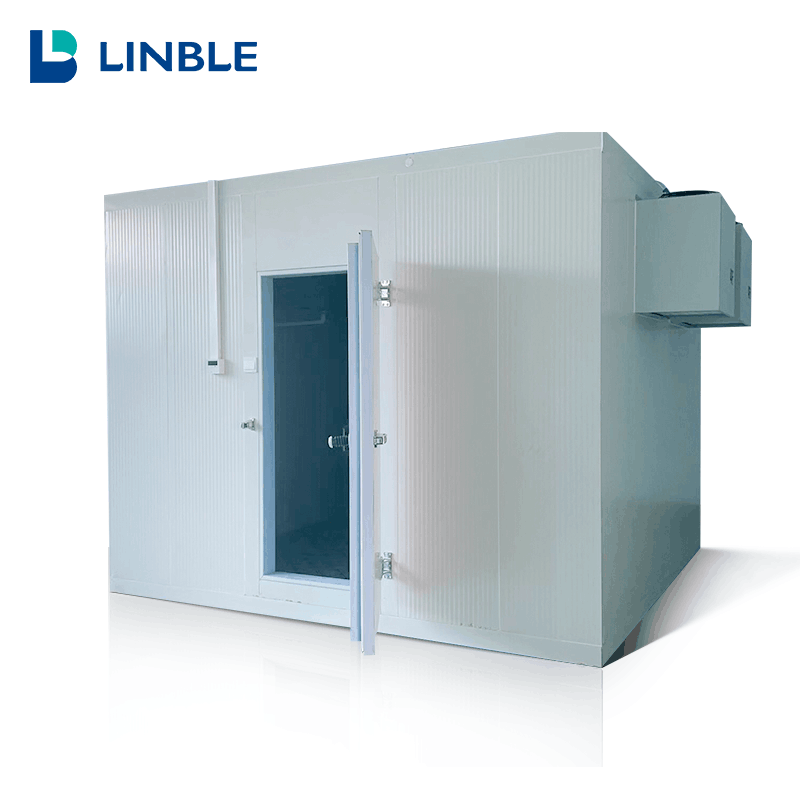Cold storages and low-pressure alarms are one of the most common problems in cleaning staff work and there are numerous reasons for this. Here are some thoughts on low-pressure alarm calibration that may be useful to you!
1. The pipeline for the refrigeration system's copper pipe is far too long.
Some freezer room factory configuration of low-pressure alarm time is relatively short during the commissioning process (ordinary 120 seconds). During establishment, the cold storages’ copper tube is too long, resulting in an extended refrigerant return to the evaporator and a low-pressure alarm fault.
The solution: you can increase the low-pressure alarm time to 180 seconds. And when you encounter a changing weather environment, you must also need to increase the low-pressure alarm time appropriately.
2. Cold room indoor unit filter dirty blockage.
Air circulation attracts dust from the environment to the surface of the freezer room filter. Some users will ignore this doubt, day after day. Its filter is too dirty and the evaporator freezes, resulting in a low-pressure alarm fault.
The solution: replace the cold storages indoor machine filter network.
3. Drying filter dirty plug or copper pipe oil plug.
The copper pipe connections must be destroyed. Some copper slag will collect in the filter drier if it cannot be completely blown clean of dirt and spoil in the refrigeration system. There will be a temperature difference between the two ends of the filter during the operation of the cold room refrigeration system.
The solution: If the filter is particularly dirty, the refrigeration system needs to be freshly blown or cleaned. The usual disposal technique is to replace the filter drier with a filter of the same type and size.
4.Refrigeration system in the low-pressure guard failure.
We perform a hanging meter test on the cold room's refrigeration system. After the pressure has returned to normal, use a multimeter to accurately measure or short the low-pressure guard. Start the compressor and let it run; if the refrigeration cycle is normal, the low-pressure guard is faulty.
The solution: replace the same specifications with the same type of low-pressure protector.
5. Refrigeration system in the solenoid valve can not open.
When the refrigeration system is turned on, you can hear the solenoid valve open. If the solenoid valve is not open, the low-pressure pressure will gradually decrease until the low-pressure alarm is triggered. When the alarm on the cold room control board is reset, the low-pressure pressure does not rise. At this point in the solenoid valve coil measurement, a resistance value is usually introduced, and infinity indicates that the coil has been burned.
The solution: replace the solenoid valve coil with the same specification and model.
6. Refrigeration system in the extension valve failure.
When the refrigeration system is running with a faulty extension valve, the low-pressure pressure does not rise, the high-pressure does not rise, and the low-pressure pressure of additional refrigerant does not rise.
The solution: First adjust the opening of the extension valve. If there is still no result, you need to replace the extension valve with one of the same size and type (note: you need to break the dirty or ice blockage of the extension valve).
7.Leakage of refrigerant in the refrigeration system.
Begin testing the cold storages refrigeration system's hang meter. When the meter is connected, no pressure is displayed, indicating that the cooling system has leaked. If there is still pressure at this point, the refrigeration system can barely function. When refrigerant is added, the pressure immediately rises, indicating that the refrigerant has leaked.
The solution: The utilized to convey the refrigeration system are first checked. Examine for signs of oil leaks and use cleaning agents to target leak locations. The refrigeration system is split, expected to hold under pressure, and then worn down if necessary. After the leak is identified, it is burned and patched, and the refrigeration system is rebuilt from the ground up.
8. Refrigeration system condenser cooling results too good.
Mainly generated in the case of low ambient temperatures, such as in winter. We can often see that in the winter there is some cooling tower equipment to close the fan, the reason is also too low condensing pressure.
The solution: adjust the cold room start pressure. Or rectify the outdoor fan and change it to a speed-controlled fan, which will better handle the problem.
9.A flattened return line in the refrigeration system causes a poor return.
The chances of this situation are small, you need to check the copper pipe, and find the flattened position.
The solution: find the location of the flattened copper tube, and replace the copper tube with the same specification.

Post time: Nov-08-2022
